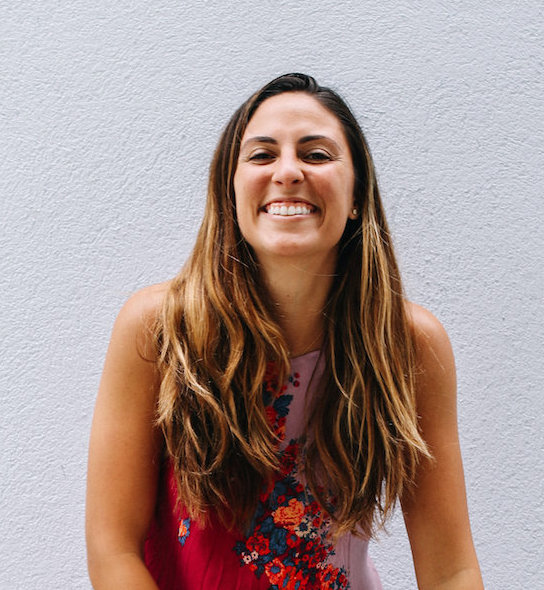If you could describe how fear feels or looks or sounds to you, what would it be like? Would it be a color (for me, dark grey)? A feeling (a mix of butterflies and sheer inability to think or move)? A word (no, no, no, no)?Create an image or feeling or word that you associate with fear. What does it do to your body? Your mind? Your overall being?
Fear presents itself differently for every single human on Earth. Even though it might look or feel different for all of us, fear is a real, biological emotion that is universally accepted as a threat of harm to our well-being—whether real or imagined. In the past, psychologists viewed fear as a negative emotion, one that we had to simply deal with in our modern world. They hypothesized that while fear may have served a purpose in hunter-gatherer days of our past—like alerting us to predators or helping us cope with natural disasters—it merely gets in the way in a world where we can order food with the click of a button. But, we’re coming to learn that if we can channel fear in the right way, if we just simply acknowledge our primal instinct instead of allowing it to make decisions for us, fear can become motivating instead of debilitating.
Our ability as humans to analyze and react comes directly from our amygdala, the ancient part of our Baby Brain that is also called “the seat of fear.” The amygdala activates our sympathetic nervous system—or the part of our body that chooses to fight or flight. But, the issue that we have with channeling that unconscious response is this: “Change has occurred so rapidly for our species that now we are equipped with brains that are super sensitive to threat but also super capable of planning, thinking, forecasting and looking ahead,” says Ahmad Hariri, professor of psychology and neuroscience at Duke University. “So, we essentially drive ourselves nuts worrying about things because we have too much time and don’t have many real threats on our survival, so our fear gets expressed in these strange maladaptive ways.”
Let’s dive into a practice that I turn to and recommend to my clients often when they’re faced with big life decisions. It’s called Fear-Setting (you’ve heard about it before thanks to our friend Tim F.), which is all about looking our biggest worries right in the face and truly understanding why they’re so freakin’ scary.
It is, in fact, possible for us to outsmart our primal instincts using tools that help us understand why they’re being activated in the first place.
As a reminder, Fear-Setting is an exercise developed by Tim Ferriss, a podcaster, entrepreneur, author of The 4-Hour Work- week, and classic Millennial success story. When Tim found himself paralyzed by a major decision in his life—whether or not to travel while running a high-stress business—he came up with a specific checklist in order to visualize the worst-case scenario and its probability of actually happening. He found that all the What ifs were spiraling around in his mind, prohibiting him from doing what he actually wanted to do because of made-up (and unlikely) fears. So, instead of allowing them to fester, he decided to do something different. He looked at them head on.
We’re going to adapt Tim’s checklist and journaling prompts for our own purposes. Nothing against Tim, but his focus is largely on mitigating risk, which I find important, but also rooted in fear. We are going to get even deeper than simply just avoiding risk; we’re going to look at the root of why you’re scared, what you can do about it, and if it warrants any further thought—or if you could simply begin letting that shit go.
We’re going to work through the following questions to get to the root of our fears using a specific example. You can use anything from your life that feels scary and daunting right now, but the Big Life Question I would recommend reflecting on here is: If you were to start turning your Dream World into reality, what might be the most fear-inducing part? Could you put your finger on one (or two or seven) aspects of your dreams that are holding you back?
We’re going to move through this adapted version of Fear-setting to assess, honestly, how scary each of these aspects really are. You might notice that as we answer these questions, the fears that run around in your brain and convince you not to do some- thing aren’t as scary when we see them up close.
Take some time to consider and write down:
- What is the worst possible outcome (WPO)? (There can be many)
- How would you feel if this WPO actually happened?
- What is the realistic likelihood of this WPO actually occurring?
- If the WPO did happen, what would be your first reaction?
- How might you solve this WPO if it did happen?
- Taking a step back, how scary is this possibility (using a 1-10 scale)?
As you can see, scary stuff isn’t that scary when you hold a light to it. And heck, sometimes it is. Sometimes, it’s real and scary and possible. But, it stings a little less when we can look at it in the eye. It’s almost like the old days when you’d run into your room after watching Aaahh!!! Real Monsters in the complete dark (no cell phones to lead the way back then), worried that Ickis or Krumm is chasing you. But then, you see your glow-in-the-dark stars above your bed—a tiny, sparkling glow that can make you feel a little less alone.
Excerpt from On Adulting: How Millennials (And Any Human, Really) Can Work Less, Live More and Bend the Rules for Good reprinted with permission of Skyhorse Publishing.


